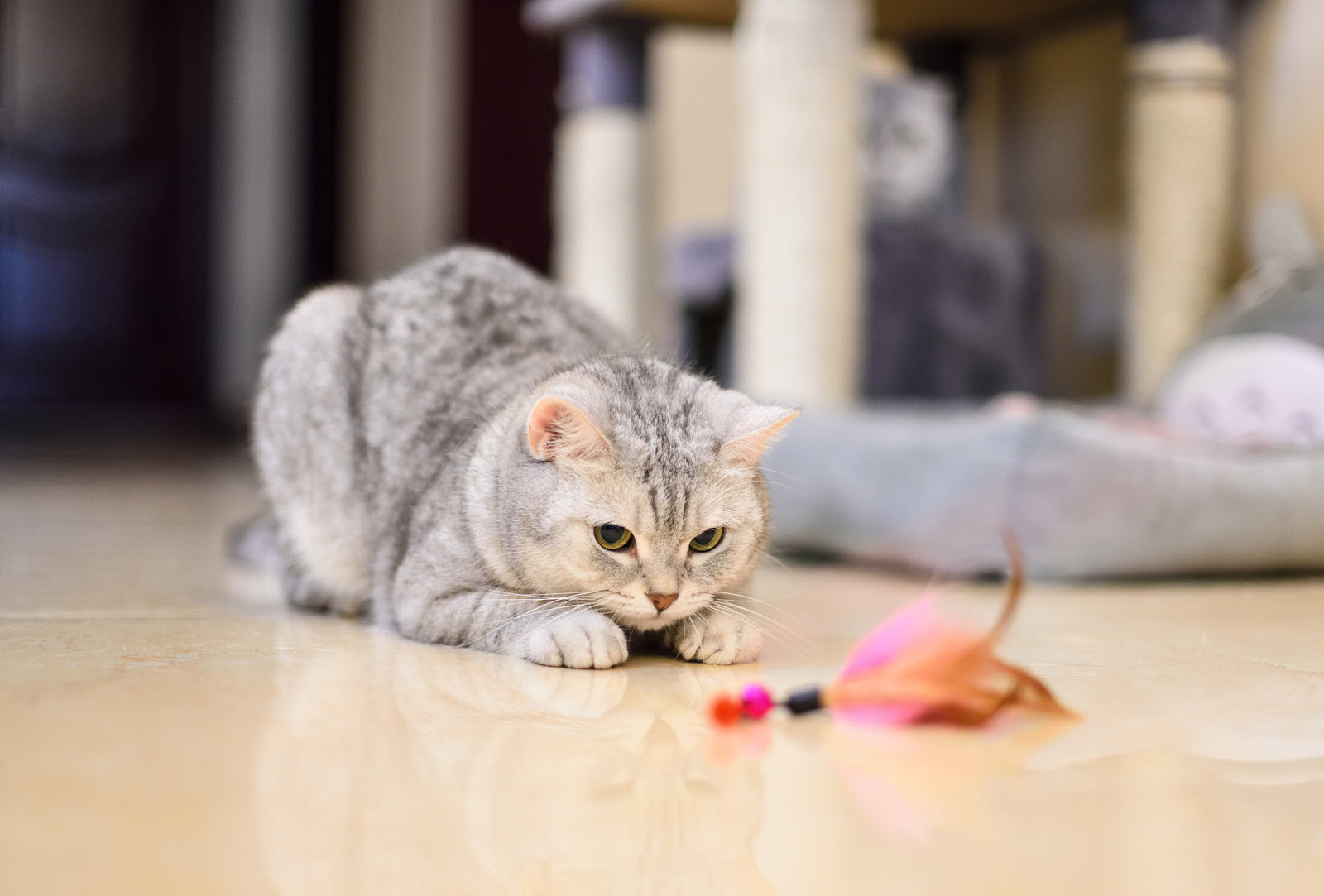
Picture this: You’re logging into an important Zoom call when all of a sudden the beloved ball of fur known as your cat begins a “zoom” of their own. With a huge burst of unexpected energy, they dash around the room, bounce off of corners, ricochet off the walls, and zoom right over your keyboard. One second they’re quiet, chill, and relaxing on the couch, and now it’s as if they’re chasing invisible prey at full speed all around your home. What’s going on? Zoomies, as it’s commonly referred to among cat owners, are technically called Frenetic Random Activity Patterns (FRAPs). And just like the technical name implies, these unexpected bursts of energy are random patterns of activity that will have your cat going from low-key and chill to hyperactive and electric in just a matter of seconds.
There can be many reasons why your cat will get the zoomies, but there are three that are the most common. Read on below to find out more
There’s Just Too Much Energy Built-Up In Their Little Bodies
It comes as no surprise to cat lovers from all over that our cats, after a long day of doing virtually nothing but lying around and resting all day, will have an excess amount of extra energy pent up within themselves. Did you know that cats will typically sleep anywhere from 12 to 16 hours a day? Talk about a cat nap! If your cat doesn’t get regular intentional exercise and movement, the only way for them to release this post-sleep bottled-up energy is to resort to getting the zoomies! At any age, cats will get the zoomies, but typically younger cats and kittens get them more frequently since they have more energy to burn through.
"Cats are ambush predators and they conserve energy for multiple short bursts when hunting," Pam Johnson-Bennett, author and Certified Cat Behavior Consultant (CCBC) says. "For indoor cats who don't get enough exercise, they may engage in the zoomies as a much-needed energy release."
To reduce the likelihood of your cat getting the zoomies, it's essential to engage them in daily physical exercise. This way they can get all their energy out in a way that won’t risk a broken vase or torn-up rug. Scheduling daily playtime and exercise with your cats not only stimulates their muscles and mind but also provides vital bonding time between you and your beloved furball.

Their Instinct is Strong
Another reason why your cat might get the zoomies is their innate hunting instinct. Sometimes, when it looks like your little furball is chasing absolutely nothing, their predatory instincts have taken over and they’re chasing imaginary prey. Break out the laser pointer or toss them some treats and see how quickly they’ll forget about their imaginary prey and chase after the bright red dot or pieces of kibble scattered across your floor. Your cat’s an expert hunter and they just want to show off their skills to you.
There Might Be Something Causing Discomfort
This next reason isn’t as common as the previous two, but it should be kept in mind when you notice your cat getting a sudden burst of hyperactivity. Sometimes when they get the zoomies, something is causing them pain or discomfort. Cats that have itchy skin or fleas will sometimes run around your home because they are trying to run away from the discomfort brought on by the dry skin or fleas. It’s important to make note of their behavior when something is causing them pain, this way you can take them to the vet before it gets any worse.
Tired of your home smelling like you have a cat?
15% off PrettyLitter
Try it today Use code: PRETTYBLOG
Sometimes their discomfort isn’t skin or flea related. Sometimes, aging cats will slowly begin to lose their eyesight or hearing. When that’s the case, they’ll get spooked easier, which then causes a frenzied run around your home.
You might be wondering how you can tell the difference between a cat with excess energy to burn and a cat who’s experiencing discomfort. Signs of pain and discomfort– beyond agitated movement, also include scratching, excess licking, and irritability. However, if your cat isn’t showing outward signs of pain or discomfort, but continues to get the zoomies despite regular exercise, it is still recommended you take them to the vet for a check-up.
Another form of kitty discomfort can happen after they use the bathroom. Whether it's constipation or something else bowel-related, post-poop zoomies are very much real! If you notice your cat do a little victory zoom after using their litter box, be sure to look out for signs of constipation. These signs can be anywhere from going outside of the litter box, throwing up, or a visible change in their stool.
If you and your vet have determined that the post-poop zoomies aren’t constipation or bowel-related, then it's likely that they could be running away from the smell of the litter box. Make sure you clean out their litter box frequently so the smell isn’t overpowering and causing them to run away. You might ask yourself, “why does my cat’s poop smell so bad?” and if you are, make sure to read up on the subject to make sure you get rid of that smell, and more importantly, that your cat stays healthy. A clean litter box not only begets a comfortable cat but also one with less likelihood of having urinary issues, bacterial problems, or a desire to poop out of their litter box.
If your zooming cat is otherwise in good health then a trip to the vet isn’t necessary. Just remember to invest in toys and regular physical stimulation. A routine play date with your cat stimulates them and wears them out so they don’t get nearly as many zoomies and also enriches the bond between the cat and cat parent.
Sources:
https://www.dailypaws.com/cats-kittens/behavior/common-cat-behaviors/cat-zoomies
https://catbehaviorassociates.com/7-benefits-of-interactive-play-for-cats/
https://www.bayshorelovespets.com/Learning-Why-and-How-Cats-Get-the-Zoomies-1-8640.html
https://allaboutcats.com/cat-zoomies
https://www.cats.org.uk/cats-blog/6-tips-for-preventing-cat-zoomies

Follow Us